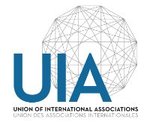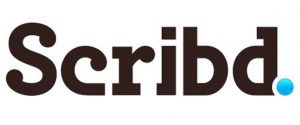Science and Education a New Dimension
Iss. 116. 2017.
O. N. Aliyeva Semantic invariant: its influence on the structure and functioning of English art terms
Abstract. The article deals with semantic invariant influence on the development of polysemic term structure. Revealing of the semantic invariant in synchronic and diachronic aspects has been analysed. The attention has been paid to semantic motivation study. Art terminological system is considered as integrated structure consisting of interconnected notions. Such a structure creates certain conditions for fulfilling semantic invariant functions.
Keywords: term, sense, semantic invariant, semantic structure, semantic opposition, distinctive semantic component.
O. N. Aliyeva Semantic invariant: its influence on the structure and functioning of English art terms
O. Andrushenko Information-structural impact on adverbial only evolution in the Middle English language
Abstract. The article, dedicated to adverbial only rise and the advancement in Middle English (ME), develops an information- structural hypothesis as the key factor of its evolution. The research focuses on two adverbials ane and only investigated in various ME historical periods, undergoing significant changes over time. It proves the aforesaid adverbials to be Focus marking components, reanalyzing from numeral ane into adverbial only in the XIII cen. The data analysis based on Rizzi’s formula and Prince’s taxonomy allows to elicit adverbial only evolutionary pattern, determine ratio of different Focus type marking, as well as, discourse status representation.
Keywords: adverbial, Focus, information structure, discourse/hearer old/new information.
O. Andrushenko Information-structural impact on adverbial only evolution in the Middle English language
J. Y. Babchuk Pecularities of interjections’ use in spontaneous speech
Abstract. The article determines the features of the use of interjections in spontaneous speech. The author points to the pecularities of interjections’ use as markers of emotion and syntactic characteristics of its usage. The main attention the author draws to illustrate vivid examples of the use of emotive interjections in spontaneous speech based on the English movies. The article illustrates the various pragmatic intentions of the speakers, which are implemented using the most common interjections, well, oh, yeah, hmm, aww, etc. The author demonstrates the most bright examples of their usage, which in turn reflect increased emotionality and expres- siveness of these interjections.
Keywords: spontaneous speech, interjection, emotion, expression, communication.
J. Y. Babchuk Pecularities of interjections’ use in spontaneous speech
J. Chalaya Behaviourial stereotypes and speech etiquette of Victorians: translation aspect
Abstract. Ideational, non-material culturally marked signs of the Victorian epoch include behaviourial stereotypes and speech etiquette. Behaviourial stereotypes are actualized in the sub-concepts LADY and GENTLEMAN, which are endowed with great social and cultural value and, as such, may find several interpretations in translation.
Keywords: fiction translation, culturally marked sign, behaviourial stereotypes, speech etiquette.
J. Chalaya Behaviourial stereotypes and speech etiquette of Victorians: translation aspect
Yu. I. Denysiuk Barack Obama’s presidential memoranda of 2016: lingual and cultural codes
Abstract. Presidential memoranda are viewed as a separate speech genre of presidential discourse. Barack Obama’s memoranda of 2016 have made the corpus of research and their linguocultural codes have been singled out. Having conducted the content-analysis of texts belonging to different thematic groups using Tropes (a Natural Language Processing and Semantic Classification software), the author substantiates the existence of specific linguocultural coding of the studied texts. Situational preferences which characterize the combinability of lingual signs in texts of different genres are defined as lingual coding of the genre and linguоcultural codes are treated as the repeated combination of the main referent fields of the texts. The following thematic groups have been singled out: 1) Presidential Appa- ratus activities in the field of home policy issues; 2) Presidential Apparatus activities in the field of foreign policy issues; 3) Presidential Apparatus activities in the field of military issues; 4) Presidential Apparatus activities in the field of terrorism issues. Linguocultural codes have been discovered for all thematic groups of memoranda under study, namely: 1) for memoranda dealing with organizational maintenance of the Presidential Apparatus activities in the field of home policy issues: ADMINISTRATION → SOCIAL GROUP; 2) in the field of foreign policy issues: POLITICS → EAST EUROPE; 3) for memoranda in the field of military issues: FIGHT →WEAPON; 4) for memoranda in the field of fighting terrorism issues: CRIME → PEACE. Verbal means used by the President to implement the discovered codes in his memoranda issued in 2016 have been analyzed.
Keywords: presidential discourse, presidential memorandum, Barack Obama, content analysis, linguocultural code, genre, referent field.
Yu. I. Denysiuk Barack Obama’s presidential memoranda of 2016: lingual and cultural codes
Y. G. Fedorova Analysis and methods of innovative units in the American newspaper discourse
Abstract. This article focuses on the analysis and research methods of innovative units in the American newspaper discourse. Development of Modern English housing indicates constant innovation dynamics lingual units, which are updated in lexical-semantic groups of certain components of cognitive segments. Thus, having considered the methodology and stages of research can state that the vocabulary of developing nonlinear, dynamic and subject to transformation.
Keywords: language innovations, American newspaper discourse.
Y. G. Fedorova Analysis and methods of innovative units in the American newspaper discourse
D. D. Kharytonova Means of Persuasive Influence Realization in Political Discourse (based on the Election Programs of P. Poroschenko, J. Tymoschenko, V. Janukovych)
Abstract. The article is devoted to the political communication, which is showed as a mean of creation of «ideal» reality, which is supposed to correspond to these or those political goals. Election programs of presidential candidates (P. Poroschenko, J. Tymoschenko, V. Janukovycha) are examined and analyzed in the way how persuasive influence might make impact on the focus audi- ence. Much attention is paid to the means of persuasive influence implementation on syntactical and graphic levels.
Keywords: political communication, manipulation, persuasiveness, election program, means of persuasive influence.
D. D. Kharytonova Means of Persuasive Influence Realization in Political Discourse (based on the Election Programs of P. Poroschenko, J. Tymoschenko, V. Janukovych)
E. V. Kholodniak Epistolary text in the context of text linguistics
Abstract. This article considers epistolary text as one of the types of text. This type of the text has all the system of general text categories such as cohesion, coherence, wholeness, openness, completeness and so on. But at the same time epistolary text also possesses some special text categories such as dialogization, address, implicity, communicativeness and some other specific peculiarities which are revealed in the article.
Keywords: epistolary text, text categories, structure, functions.
E. V. Kholodniak Epistolary text in the context of text linguistics
I. V. Kozachenko Implicit and explicit approaches in the process of learning English grammar
Abstract: The article is dedicated to study the effectiveness and feasibility of using implicit and explicit approaches in the study of foreign language grammar. The nature concepts «approach», «implicit approach», «explicit approach» are characterized. The main methods of these approaches are defined. Characteristic differences between implicit and explicit approaches are defined. It was found that with using explicit approach of studying English the basis is learning characteristic rules but for the implicit – is practical study without knowing rules. Attention is drawn to explaining the basic methods – inductive, deductive, structural and communicative.
Keywords: approach, implicit approach, explicit approach, inductive method, communicative method, inductive method, deductive method, teaching.
I. V. Kozachenko Implicit and explicit approaches in the process of learning English grammar
Pylypiv O., Lypetskyi A. Names of precious metals in “The Natural History” written by Pliny the Elder: cultural linguistic aspect
Abstract. The article highlights lexical means for expression of “precious metals” notion in “The Natural History” written by a writer and encyclopaedist of I century A.D., Pliny the Elder; it also discovers their semantic features.
Keywords: lexical unit, thematic group, lexical and semantic analysis, names of precious metals, ancient art.
Pylypiv O., Lypetskyi A. Names of precious metals in “The Natural History” written by Pliny the Elder: cultural linguistic aspect
Y. V. Mynenko Traits to the portrait of author of «Liament mishchan ostroz’kych in 1636»
Abstract. There is considered the question of author of «Weeping of Оstrog philistines by 1636», the last work of ostrog literary world in the end of XVI – the first half of the XVII centuries in the article. Studied the author’s origin, when he could study in the Ostrog academy, it is his unique work.
Keyword: Ostrog academy, author, ostrog literary world, protector.
Y. V. Mynenko Traits to the portrait of author of «Liament mishchan ostroz’kych in 1636»
E. A. Pogrebnyak Volyn region during World War II in Czech literature fact
Abstract. The article investigates modality of the multinational image of Volyn region during the wartime in the modern Czech literature fact. Research on the issues concerning deconstruction of the opposition Czechs /Ukrainians in paradigm Own/Foreign was based on family saga Y. Olic and memoirs of J.Jelinek. The main principles of above mentioned literary works were studied and were comparatively analyzed within historical and cultural aspects. Apocalyptical modus of Volyn region during wartime was depicted in the work of Y. Olic. Dialogical Christian approach of. J. Jelinek’s was shown by description of war in Volyn region as well as images of Ukrainians.
Keywords: Czechs, the images of Ukrainians, Volyn, war, Own/Foreign.
E. A. Pogrebnyak Volyn region during World War II in Czech literature fact
A. S. Polishchuk (Shadchina) Ancient Rhetoric and Modern Pragmatics: correlations and differences
Abstract. This paper is aimed at discovering if comparison between Ancient Rhetoric and Pragmatics is possible and productive. The works of our predecessors have already identified some common fundamental principles for both disciplines, such as: the basic setting “language as action”, persuasion or other influence as an indispensable attribute of the communication, the cognitive approach. We have added to this well-established “register of comparison” some new facets: “the philosophical origins” and “the comparative analysis of the basic concepts”. Within the analysis of “the philosophical origins” we have found the same stadiality in the develop-ment of Morris’s theory of sign – from semantics to pragmatics, that has been retrieved from the evolution of Parmenides’s “proto- semiotics” into the background of Greek Rhetoric. Among the “the basic concepts” we have examined one of the key notion of Pragmatics – intentionality, reflected in the contemporary studies as persuasive and communicative intention. These terms have been compared with their Greek equivalents (διάνοια / προαίρεσις) in the texts of Aristoteles, Dionysius of Halicarnassus, Hermogenes of Tarsus. Thus, we argue that Ancient Rhetoric does not belong only to the prehistory of contemporary Pragmatists, it can be a valua- ble source of new ideas and a “stone test” for linguistic and philosophical concepts in the framework of common approach “language as action,” despite the fact that both disciplines differ in their ultimate goals and meta-language.
Keywords: ancient rhetoric, pragmatics, persuasive and communicative intention.
A. S. Polishchuk (Shadchina) Ancient Rhetoric and Modern Pragmatics: correlations and differences
L. V. Soloshchuk Non-verbal Components of Communication as Means of Creating the Comic Effect in the Modern English Discourse
Abstract. The role of non-verbal components of communication in creating the comic effect has been analyzed in the article. The polyfunctionality of kinesic, proxemic and prosodic components of communication serves as a background for creating a comic effect due to the violation of the appropriate norms of communication when the incongruence is disposed at the non-verbal level. The comic effect may be created in the process of interaction of verbal and non-verbal components both at the macro-level and microlevel.
Keywords: non-verbal components of communication, comic effect, kinesic, proxemic, prosodic, macro-level, micro-level, interaction.
L. V. Soloshchuk Non-verbal Components of Communication as Means of Creating the Comic Effect in the Modern English Discourse
E. O. Veremchuk Self-regulation of the lexico-semantic field SPACE: philosophic and synergetic aspects
Abstract. The main elements of conceptual-categorial apparatus of synergetics as interdisciplinary scientific field are analysed. The process of self-organisation of the lexico-semantic field SPACE as an open unbalanced non-linear system is studied. The potential local attractors of the lexico-semantic field, in its process of adaptation to the communicative needs of the speakers, are identified. The mechanisms of creation and adaptation of the lexical units are described using synchronic and diachronic approaches with paying special attention to the etymological aspect.
Keywords: attractor, bifurcation, lexico-semantic field, self-regulation, synergetics.
E. O. Veremchuk Self-regulation of the lexico-semantic field SPACE: philosophic and synergetic aspects
T. V. Zubko Lexical-semantic content of monovalent predicates of perception in the modern Ukrainian literary language
Abstract. The article investigates the lexical-semantic content of monovalent predicates of perception. The proposed allocation of the monovalent groups of perceptual predicates and clarified by means of their lexical representations. Special attention is paid to varieties of single verb predicates of perception in the modern Ukrainian literary language. The importance of further analysis of the lexical and semantic content of perceptual predicates of various valence potential.
Keywords: valence, lexical semantics, monovalent predicates, predicates, predicates of perception.
T. V. Zubko Lexical-semantic content of monovalent predicates of perception in the modern Ukrainian literary language







